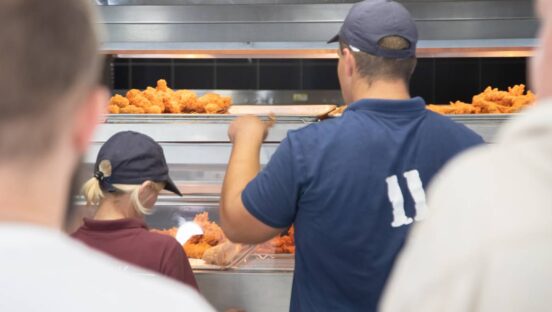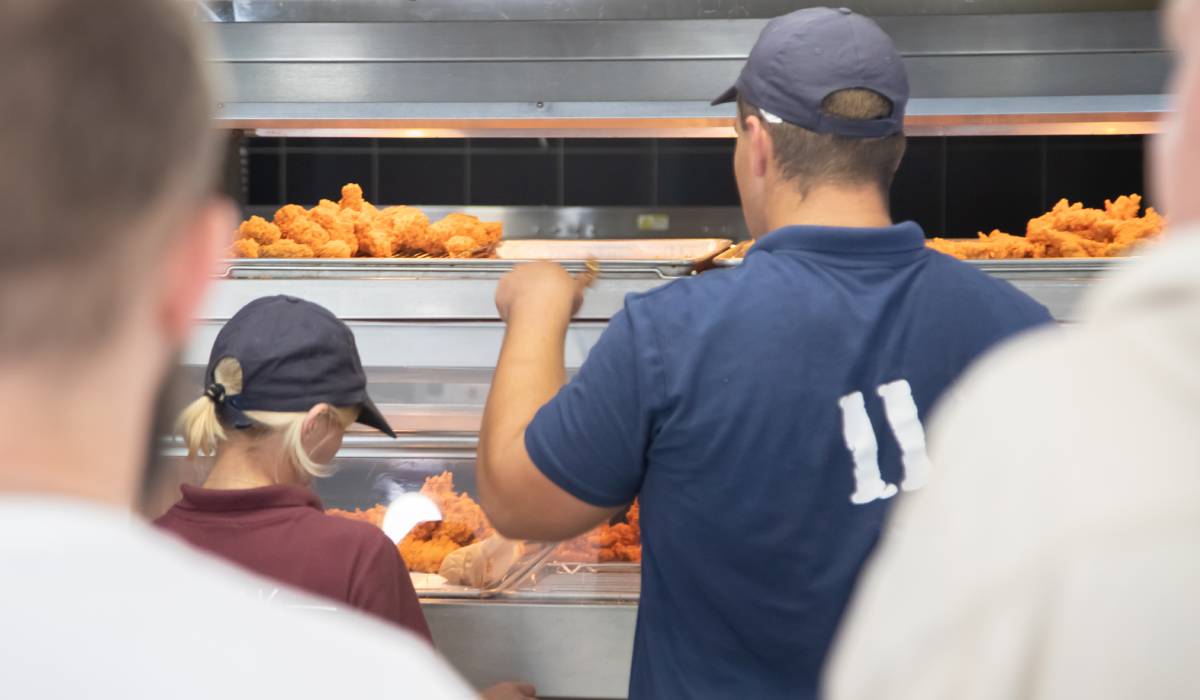The restaurant industry added 40,800 jobs in June and now employs 11,938,000 workers—a figure that’s climbed 27 percent since June 2020 yet remains roughly 700,000 below per-COVID marks, according to Bureau of Labor Statistics data.
Overall employment in “leisure and hospitality,” a category that tacked on 67,000 jobs in June, is down 1.3 million, or 7.8 percent, from February 2020.
The country’s unemployment rate held at 3.6 percent for the fourth consecutive month and the number of unemployed people remained essentially unchanged at 5.9 million. Before the pandemic, those numbers were 3.5 percent and 5.7 million, respectively.
Hospitality unemployment rates came down, however, from 10.9 to 5.2 percent year-over-year. Wages in the leisure and hospitality sector grew 0.2 percent.
Zhong Xu, co-founder and CEO of Deliverect chatted with QSR about the current state of labor and inflation as the summer marches on.
How will inflation and the rising cost of food will impact the foodservice industry overall?
Starting now, and likely into the years to come, there will continue to be a valiant effort to optimize profit in order to help revive the hospitality industry and its contribution to the economy. We will continue to see more restaurants incorporate review management within their business model, in order to closely monitor profit levels and how to best increase profits, especially as inflation is taking center stage.
Restaurants need to drive customer retention and conversion levels in order to increase profits. For this reason, we can expect a rapid increase in the frequency of promotions and discounts throughout the year, not just during seasonal moments.
Regarding cost of food, menu engineering is a powerful strategy that combines psychology, data, and design to ensure that every item on a restaurant’s menu is popular and profitable. In fact, menu engineering can increase profits by 20 percent. For example, restaurants can promote top-selling and high-margin dishes and take cost-killers off the menu. If restaurant owners are not ready to let go of a menu item, they should try changing the price or switching to lower-cost ingredients.
Restaurants will also look for ways to mitigate the impact of inflation by lowering operating costs through the deployment of technology and automation.
How can technology can support restaurants with the lack of employees?
Restaurants continue to face staffing challenges and should look out for ways to use employees’ time most efficiently. Many restaurants assign one of their employees to online orders, accepting delivery and take-out orders on the aggregators’ tablets, and entering them in a restaurant’s point-of-sale system by hand. This manual task, which is both time and labor intensive, creates a delay in the order flow. Manually double punching orders also creates a delay in the kitchen, because kitchen staff doesn’t receive the orders until after they’ve been created in the restaurant POS. Once the kitchen gets the online order tickets, they all look different based on the delivery service’s specific ticket layout. Enter confusion – and even slower delivery times.
Another issue with rekeying orders is that it’s prone to error. Making mistakes is only human, but errors in the customer’s order will lead to complaints, frustration, and loss of revenue and repeat business.
By automating the online order process, you can eliminate human error and free up staff’s time, so they can focus on improving the customer experience. With orders automatically sent to a restaurant’s POS and tickets printed in the kitchen in a consistent format, all operations will run much smoother and help a restaurant’s bottom line.
How can brands navigate high turnover and drive efficiencies?
There are many vacant positions across the country and the pandemic has been the primary driving force behind the industry’s labor crisis. There currently is, and unfortunately will continue to be, a challenge with maintaining healthy retention levels of staff working across the hospitality industry. Recruitment of new staff members will also be a struggle, with the rising number of unfulfilled hospitality job vacancies. To help combat this, restaurants should implement strong recruitment/employee recommendation programs, so that positions can be filled quickly when needed. Restaurants also have to raise wages and offer employee incentives where they can to retain employees in such a competitive market.








